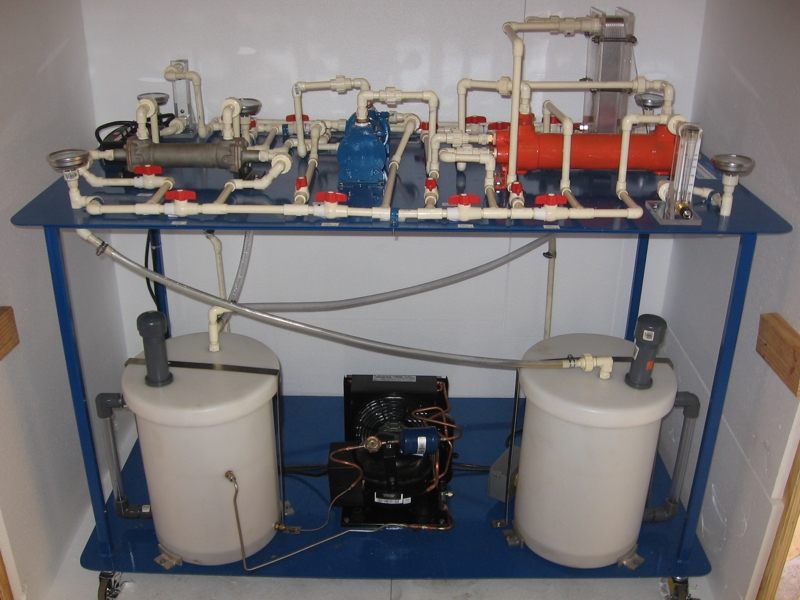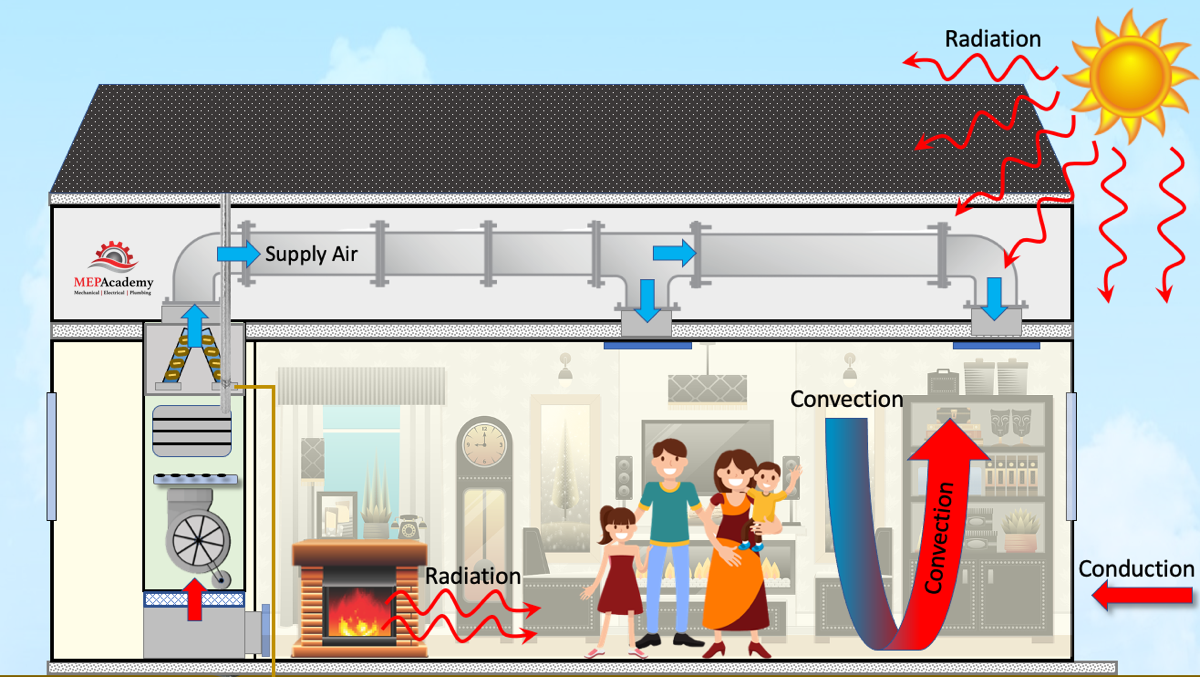Best Practices for Using DVS Heat Transfer Systems in Data Centers
Wiki Article
The Role of Heat Transfer Solutions in Sustainable Energy Solutions for the Future
Heat transfer systems are important in the quest for sustainable power options. They enhance thermal energy management, boosting the effectiveness of renewable technologies. By employing mechanisms like conduction, radiation, and convection, these systems decrease energy losses. Their duty in solar thermal and geothermal applications is specifically substantial. As developments emerge, the capacity for further innovations raises vital concerns about future power approaches. What developments will form the landscape of sustainable power?Comprehending Heat Transfer Equipments

The Importance of Thermal Power Management
Reliable thermal power monitoring is vital for taking full advantage of power efficiency and lessening waste in various systems. By controling temperature level and optimizing Heat transfer procedures, organizations can markedly decrease power intake and functional expenses. Effective management entails the application of advanced technologies and methods that keep track of and regulate thermal conditions within systems, guaranteeing that power resources are used successfully. Additionally, proper thermal power monitoring adds to minimizing greenhouse gas emissions, straightening with worldwide sustainability objectives. It also improves system dependability and efficiency, bring about boosted item high quality and longer devices life expectancy. Ultimately, prioritizing thermal power management is a crucial action towards developing more lasting energy services and promoting an accountable method to energy usage in industrial and property contexts.Applications of Heat Transfer in Renewable Resource
While different renewable resource sources assure sustainability, the reliable application of Heat transfer plays a vital duty in their efficiency. In wind energy systems, Heat transfer is utilized for turbine element air conditioning, boosting performance and long life. Geothermal power counts on reliable Heat exchange in between the planet's subsurface and the liquid flowing in the system, making the most of power removal. Biomass power processes additionally gain from Heat transfer, as it helps in transforming natural materials right into useful gas through pyrolysis and gasification. In addition, in hydropower, keeping suitable temperatures in tanks can improve energy output. Each of these applications shows the crucial value of Heat transfer systems in improving eco-friendly energy technologies, ultimately adding to an extra lasting energy future.Enhancing Solar Thermal Power Efficiency
As solar thermal power systems proceed to develop, enhancing their effectiveness has actually become essential for maximizing power output. Breakthroughs in Heat transfer innovations, such as improved thermal storage space products and ingenious Heat exchangers, play a significant role in improving efficiency. By making use of advanced products that have premium thermal conductivity, systems can move and catch Heat extra properly. Additionally, incorporating radar that comply with the sunlight's course guarantees that enthusiasts receive suitable solar direct exposure throughout the day. Making use of nanotechnology in solar absorbers can further increase energy absorption rates. Incorporating automatic control systems assists handle and regulate temperature levels energy distribution successfully, leading to reduced losses and boosted total system efficiency. These enhancements lead the method for more sustainable solar thermal power options in the future.Geothermal Home Heating: A Sustainable Remedy
Geothermal heating offers a sensible option for lasting energy, supplying substantial environmental advantages with minimized greenhouse gas discharges. Its effectiveness and cost-effectiveness make it an appealing alternative to typical furnace. Nonetheless, challenges associated with implementation must be resolved to maximize its prospective effect.Environmental Advantages of Geothermal
Traditional home heating techniques add considerably to greenhouse gas emissions, geothermal heating offers a compelling option that decreases ecological effect. By taking advantage of the Planet's internal Heat, geothermal systems use a sustainable energy resource, considerably decreasing dependence on nonrenewable fuel sources. This technique produces very little carbon discharges, making it a cleaner choice for industrial and domestic home heating. In addition, geothermal systems advertise power performance, as they require much less power compared to conventional heating systems. DVS Heat Transfer Systems. The usage of geothermal power additionally aids in reducing air contamination, boosting regional air quality and public health and wellness. As a sustainable service, geothermal heating supports climate adjustment reduction efforts, placing itself as a crucial part in the shift in the direction of a greener futurePerformance and Cost-Effectiveness
Just how does geothermal heating gauge up in regards to effectiveness and cost-effectiveness compared to traditional heater? Geothermal home heating demonstrates premium efficiency, often achieving a coefficient of performance (POLICE) of 3 to 5, implying it produces three to 5 devices of Heat for every single device of electrical power eaten. This efficiency translates into lower operating expense, specifically in areas with steady geothermal sources. Initial setup costs can be greater than traditional systems; nevertheless, lasting financial savings on power expenses and minimized upkeep expenditures can offset these in advance financial investments. Furthermore, several governments incentivize geothermal systems with discounts and tax obligation credit histories, improving their cost-effectiveness. Generally, geothermal home heating arises as a lasting and financially practical choice to even more conventional home heating solutions.Implementation Difficulties and Solutions
Many obstacles can hamper the prevalent application of geothermal heating unit, despite their clear advantages as a lasting power service. High first installation costs typically deter homeowners and financiers, making funding a considerable obstacle. Furthermore, the geographical constraints of ideal geothermal websites restrict accessibility in particular regions. Regional policies and allowing procedures can likewise complicate job advancement, bring about hold-ups. Moreover, public awareness and understanding of geothermal systems remain low, impeding acceptance. To attend to these obstacles, targeted education and learning projects can enhance public understanding, while federal government motivations could alleviate economic worries. Collaborating with neighborhood authorities to enhance policies might promote smoother task authorizations, inevitably promoting the adoption of geothermal home heating as a practical, sustainable energy alternative.Innovations in Heat Transfer Technologies
Advancements in Heat transfer technologies play a vital duty in enhancing power performance and sustainability. Advanced Heat exchangers and stage change materials go to the center of these developments, using significant enhancements in thermal management. These modern technologies not just maximize energy use yet likewise contribute to reducing ecological influence in various applications.Advanced Heat Exchangers
Advanced Heat exchangers play a crucial duty in boosting power performance across various applications in sustainable energy remedies. These devices promote the transfer of Heat between 2 or even more fluids, markedly minimizing energy intake in procedures such as commercial home heating, air conditioning, and power generation. Technologies in products and layout, such as using nanofluids and compact arrangements, have actually resulted in boosted thermal performance and minimized dimension needs. Furthermore, advancements in electronic tracking and control systems enable for maximized procedure, more raising effectiveness. By lessening waste Heat and making best use of energy recovery, progressed Heat exchangers add to reduce carbon impacts and sustain the change towards eco-friendly innovations. Their proceeded development is important for attaining worldwide power sustainability objectives.
Stage Adjustment Materials
The assimilation of stage adjustment materials (PCMs) right into Heat transfer modern technologies represents a substantial development in energy monitoring and efficiency. PCMs soak up and release thermal power throughout their stage modifications, allowing effective temperature regulation in structure materials and energy systems. By storing excess Heat during optimal durations and launching it when need boosts, PCMs contribute to fill changing and power conservation - DVS Heat Transfer Systems. This capability enhances the performance of eco-friendly energy systems, particularly in solar thermal applications. Additionally, PCMs can enhance the thermal comfort of interior settings, decreasing reliance on standard home heating and cooling down methods. As innovations in PCM solutions proceed to emerge, their function in lasting energy solutions is positioned to grow, providing encouraging opportunities for future research Click This Link and application
Future Potential Customers for Heat Transfer in Sustainable Power
As the demand for sustainable energy solutions remains to increase, the role of Heat transfer systems is becoming progressively important in forming future technologies. Technologies in materials and designs are anticipated to enhance effectiveness in Heat transfer, decreasing energy losses in various applications. The assimilation of sophisticated thermal storage systems, such as stage change products and thermochemical storage, will certainly enable far better monitoring of energy resources. Research into nanofluids and biomimetic Heat exchangers might even more maximize thermal efficiency. Moreover, the adoption of smart modern technologies will certainly allow important site for real-time surveillance and flexible control of Heat transfer procedures. These innovations are positioned to greatly add to the general effectiveness and sustainability of power systems, paving the means for a much more energy-efficient future.Often Asked Inquiries
Exactly How Can People Carry Out Heat Transfer Solution at Home?

People can carry out Heat transfer systems in the house by mounting energy-efficient home appliances, making use of radiant heating, and optimizing insulation. These actions improve energy efficiency, minimize prices, and advertise lasting methods in household environments.

What Are the Expenses Related To Setting Up Heat Transfer Solutions?
The costs connected with installing Heat transfer systems vary commonly, usually encompassing devices, installation labor, and upkeep. Elements such as system kind, home size, and local regulations substantially affect the overall expense involved.Are There Federal Government Incentives for Heat Transfer System Installations?
Federal government motivations for Heat transfer system installments vary by area and can include tax grants, rebates, and credits. These economic benefits aim to motivate fostering, ultimately promoting power efficiency and lowering ecological influence within areas.Just How Do Heat Transfer Solutions Influence Energy Costs?
Heat transfer systems significantly affect energy expenses by enhancing energy effectiveness. By boosting the transfer of Heat, these systems lower additional info energy usage, leading to lower utility prices and creating an extra sustainable method to energy management.What Upkeep Is Needed for Heat Transfer Systems?
Maintenance for Heat transfer systems includes routine assessments, cleaning of elements, examining liquid degrees, making certain appropriate insulation, and changing worn parts. These tasks aid keep effectiveness, protect against break downs, and prolong the system's operational life-span.These systems assist in the motion of thermal power from one tool to one more, enabling the transfer of Heat for power, home heating, or air conditioning generation purposes. Geothermal energy relies on reliable Heat exchange in between the planet's subsurface and the fluid circulating in the system, making best use of power extraction. Additionally, geothermal systems advertise energy performance, as they call for much less energy compared to conventional heating systems. Advanced Heat exchangers play an important role in enhancing energy performance across different applications in sustainable power remedies. Heat transfer systems significantly influence energy costs by optimizing power performance.
Report this wiki page